
What to pack for a snow trip
Are you planning on hitting the slopes for a winter gateway with your friends? So your excitement are probably out of control 😉 We understand you, and we are with you! After all it’s not everyday that you manage, in your busy schedules, a trip to have some fun with your friends, with some winter sports in the middle, sitting around a cozy fire wrapped in a warm blanket sipping on a hot chocolate with views of a stunning winter wonderland outside. But while it looks gorgeous, you must remember that snow is freezing cold and very wet, which won’t be fun if you are not prepared. So to help you pack here is a list of winter essentials so you’re fully equipped before takeoff. The nice surprise here is that you probably have most of what you need already and other items can usually be borrowed from friends!
We highly recommend that you stay away from wearing cotton clothing (jeans, sweatshirts, sweatpants, etc.) next to your skin, on the slopes because it will absorb sweat and snow and make you cold. For that same reason, wool or acrylic socks are better than cotton athletic socks. Wear one, thin pair.
1. Wicking Layer – Don’t even think about leaving for a snow trip without thermals. They’re super lightweight so they won’t take up much room, and you will wear them every day, we promise. Wear them as a base layer underneath your pants for added warmth; they’re naturally flexible, and they help regulate your body temperature too. This is the layer worn next to your skin, usually consisting of long underwear. Look for thermal underwear made of a synthetic, usually polyester fibre that has “wicking” power.This means the fibres will wick (move) moisture away from your skin and pass it through the fabric so it will evaporate. This keeps you warm, dry and comfortable. Silk is also a good, natural fabric that has wicking abilities. Even though it’s cold, you will sweat – especially if you are snowboarding or skiing, which definitely we will be doing!
2. Insulating Layer – This middle layer includes sweaters, sweatshirts, vests and pullovers. The purpose of this layer is to keep heat in and cold out, which is accomplished by trapping air between the fibres. Popular insulation materials include: Fleece, a synthetic material which maintains its insulating ability even when wet and spreads the moisture out so it dries quickly, and wool, which naturally wicks away moisture.
3. Protection Layer – be sure the outer layer allows for some protection against the elements of winter. It should repel water from snow, sleet or rain and block the wind, while also letting perspiration evaporate. Also helpful is to be sure your pants zip up on the side at least up past your boot, so you can cover the boots with the pant and keep moisture out of the boot. Most genuine winter jackets and pants are made waterproof and breathable to some extent by using tightly woven fabrics teamed with a coating or laminate. This keeps moisture on the outside but allows perspiration to escape, keeping you dry and comfortable. In addition, many snowboard pants are reinforced in the seat and knees for extra protection when kneeling or sitting on the snow, or for when we give a heroic fall 😉
Headwear – Your face and head are more sensitive to changes in temperature than the rest of the body, so it pays to keep them warm. Helmets or knit hats are the best at keeping your head warm when skiing or snowboarding. If you choose to wear a helmet, and you definitely should even if you are a good skier because there might be someone on the hill who isn’t and lots of good skiers are injured getting run into by other people, but keep in mind that you should select one helmet that breathes appropriately. A wool pom-pom hat is one of the most wanted winter accessories and a must have on and off the slopes. Believe us, no one wants cold ears in subzero temperatures.
Eyewear – Protecting your eyes is a wise thing to do when skiing. The glare from the snow can be tough on your eyes when you are out and about.
Hands – Wear gloves, or you will think that you lost your fingers. Waterproof gloves are ideal for keeping your hands toasty in the mountain and also pack a lighter pair for the evening.
Socks – Obviously you’ll want either ski boots or snowboard boots. What goes under them is just as important. Happy feet are a skier/riders best friend. The last thing you want to do is limit circulation in your feet, so keep that in mind when thinking about the thickness in your socks. If you have a thick boot, you won’t need a very thick sock, and on the flip side, if you are wearing sneakers in the snow, you will want a heartier sock. Ski and snowboard boots are designed to be warm. Thick socks or multiple socks will only give you blisters.
Boots – Your regular boots just won’t cut it in the snow. Not only is it wet, but also, snow turns to ice, which turns to mud… which is also very slippery. Be smart and invest in a pair of snow boots. They’re built for this kind of weather, and even if they’re not super pretty to look at, hey, it’s the snow—everyone will be wearing them. So pack a pair of boots with tread, no heels, ladies, it’s icy out there.
Suitcase – Before you embark on your trip with the usual wheeled luggage, think about how those small wheels are going to handle the snow. Don’t make a rookie mistake, grab a weather-proof duffel bag instead, that can handle rain, hail and snow.
Suncream – Just because it’s the snow doesn’t mean you won’t need sun protection. In fact, you’ll need it just as much as a tropical holiday. The sun reflects off the ice, and the glare can really burn. Make sure you put high-protection 50+ sunscreen on every day.
Bathing suit and flip flops – Nothing beats relaxing in the heated outdoor pool or hot tub on a snowy night!
Lip cream – slather it on at night and in the morning your chapped lips will be much better!
Topricin Healing Cream – is a must-have to get through the winter season: A must-have for skiers! When applied beforehand, it helps maintain vibrant micro capillary blood flow in your extremities and helps maintain a more constant blood flow. Applied afterwards, it stimulates maximum blood flow to chilled extremities, helping to get them warm more quickly. It also eases the aches and pains of exertion by helping the body to heal the damage that’s causing the pain.
Aprés-ski Clothes – usually is casual, some nice and warm wool or cashmere sweater or coat, a cashmere scarf for the chilly days and nights ahead, this versatile piece is the ultimate snow trip accessory. It’s super warm and cozy by the fire and is a ultra-chic look around your neck when walking around outside too; a warm and cozy winter coat, there are so many options out there, you just have to choose the warmer and the one who looks good on you.
Have fun, winter wonderland is waiting for your arrival!
Snow trip shopping list:
—-
Estão a planear um fim de semana na neve com os vossos amigos? Então, só podemos imaginar que o vosso entusiasmo deve estar completamente fora de controlo 😉 Nós compreendemos e estamos convosco! Afinal, não é todos os dias que se consegue, com agendas sempre tão ocupados, arranjar tempo para uma viagem para nos divertirmos com os nossos amigos, com alguns desportos de inverno pelo meio, sentados à volta de uma acolhedora lareira enrolados num cobertor bem quente a beber um chocolate quente com vista para o exterior, para um incrível país das maravilhas do inverno. Mas, embora tudo pareça fantástico, há que lembrar que a neve é gelada e muito molhada, o que não será divertido se não estivermos preparados. Por isso, e para vos ajudarmos a fazer a mala, aqui fica uma lista das peças essenciais de inverno, e assim estarão totalmente equipados e preparados para a partida. A agradável surpresa é que provavelmente têm a maior parte do que precisam e outras peças geralmente podem ser emprestados de amigos!
Recomendamos que fiquem longe de usar roupas de algodão (jeans, camisolas, sweater, etc.) junto ao corpo nas montanhas, porque estas irão absorver o suor e a neve e ficarão com frio. Por esse mesmo motivo, as meias de lã ou acrílico são melhores do que as meias de atletismo de algodão. Usem um par de meias fino.
Camadas de roupa – A melhor maneira de se vestirem para o inverno é seguir a regra das 3 camadas de roupa. As camadas de roupa oferecem flexibilidade para adicionar ou remover peças de roupa, dependendo das condições climatéricas, do nível de actividade ou do lugar onde estiverem, restaurantes, lojas, galerias e bares estão sempre muito aquecidos. Estas são as camadas que devem usar:
1. Camada interior – Não pensem em sair para uma viagem à neve sem roupas interiores térmicas. São muito leves por isso não ocupam muito espaço, e prometemos que vão certamente usá-las todos os dias. Usem-nas como uma camada-base por baixo das calças por forma a manterem-se quentes; estas peças são naturalmente flexíveis e também ajudam a regular a temperatura do corpo. Esta é a camada usada ao lado da pele. Procurem a roupa interior térmica feita de uma fibra sintética, geralmente de poliéster, que tem o poder de absorção. Isto significa que as fibras irão absorver a humidade da pele e passá-la através do tecido por forma a evaporar. Isso mantém-nos quentes, secos e confortáveis. A seda também é um tecido bom e natural com capacidade de absorção. Mesmo que esteja frio, vamos transpirar – especialmente se estivermos a fazer snowboard ou Ski, o que definitivamente iremos estar!
2. Camada isolante – Esta camada intermédia inclui camisolas, sweat-shirts ou coletes. O objetivo desta camada é manter o calor dentro e o frio fora do corpo, o que é conseguido através da captura de ar entre as fibras. Os materiais de isolamento mais comuns incluem: “Fleece” ou mais conhecido como tecido polar, um material sintético que mantém a sua capacidade de isolamento, mesmo quando molhado e espalha a humidade para que esta seque rapidamente, e a lã que naturalmente evita a humidade.
3. Camada exterior/protecção – certifiquem-se de que a camada exterior permite alguma proteção contra os elementos do inverno. Esta camada deve repelir a água da neve, a chuva e bloquear o vento, e simultaneamente também deve deixar a transpiração evaporar. Também é útil terem a certeza de que as calças tem fecho lateral, pelo menos até às botas, para que seja possível cobrir as botas com as calças e manter a humidade fora das botas. A maioria dos casacos e calças de inverno genuínas são feitas à prova de água e respiráveis. Mantendo assim a humidade fora, mas permitindo que a transpiração evapore, mantendo-nos secos e confortáveis. Além disso, muitas calças de snowboard são reforçadas no assento e nos joelhos para uma proteção extra ao ajoelhar-se ou sentar-se na neve, ou para quando damos um valente trambolhão 😉
Capacete e gorros – O rosto e a cabeça são mais sensíveis às mudanças de temperatura do que o resto do nosso corpo, por isso é importante mantê-los aquecidos. Capacetes ou gorros são os melhores para manter a cabeça quente quando se vai fazer ski ou snowboard. Se optarem por usar capacete, e definitivamente devem fazê-lo, mesmo que sejam uns skiers de topo, porque pode haver alguém que certamente não é, e muitos skiers ficam lesionados ao serem atingidos por outras pessoas. Mas tenham em mente que devem escolher um capacete que deixe respirar adequadamente. Um gorro de lã com pom-pom é um dos acessórios mais trendy este inverno e pode ser usado dentro e fora das pistas. Acreditem ninguém quer as orelhas frias com temperaturas inferiores a zero.
Óculos – Proteger os olhos é algo inteligente a fazer quando estamos a fazer ski. O brilho da neve pode ser muito incomodativo para os olhos.
Mãos – Usem luvas, ou irão achar que perderam os dedos. As luvas impermeáveis são ideais para manter as mãos quentes e secas, e levem também um par de luvas mais leve para a noite.
Meias – Obviamente que irão estar de botas de ski ou snowboard. A meias que calçam são também importantes. Pés felizes são o melhor amigo dos skiers/caminhantes. A última coisa que se quer fazer é limitar a circulação dos pés, por isso tenham isso em mente ao escolher a espessura das meias. Se as botas são grossas, não será preciso umas meias muito grossas, por outro lado, se estiverem a usar tennis na neve, vão querer umas meias mais grossas. As botas de ski e snowboard são feitas para serem quentes. Meias espessas ou múltiplas meias só irão causar bolhas.
Botas – As botas usuais não são de todo adequadas para a neve. Não só o piso é molhado, mas também, a neve se transforma em gelo, que se transforma em lama … o que é muito escorregadio. Sejam inteligentes e invistam num par de botas de neve. Estas botas são feitas para este tipo de clima, e mesmo que não sejam muito bonitas, esqueçam estão na neve – todos a gente as vai estar a usar. Por isso, levem um par de botas de neve, nada de saltos meninas há gelo por todo o lado.
Mala – Antes de embarcarem com as malas com rodinhas habituais, pensem como essas pequenas rodas vão lidar com a neve. Não façam um erro de principiante, levem uma mala impermeável e à prova de intempéries, que consiga aguentar com chuva, granizo e neve.
Protector solar – Só porque estamos na neve não significa que seja precisa proteção solar. Na verdade, será tão preciso como quando estamos de férias num país tropical. O sol reflete no gelo, e o brilho pode realmente queimar. Certifiquem-se em por protetor solar de alta proteção 50+ todos os dias.
Fato de banho e chinelos – Nada é mais relaxante do que estar numa piscina exterior aquecida ou banheira de hidromassagem numa noite coberta de neve!
Baton para cieiro – ajuda a acalmar os lábios durante a noite e de manhã os lábios rachados estarão muito melhores!
Creme anti-inflamatório Topricin – é um must-have para passar a temporada de inverno, um must-have para skiers! Quando aplicado no inicio do dia, ajuda a manter o fluxo sanguíneo vibrante nas extremidades e ajuda a manter um fluxo sanguíneo mais constante. Aplicado no final do dia, estimula o fluxo sanguíneo para as extremidades geladas, ajudando a aquecer mais rapidamente. Também alivia as dores ajudando também o corpo a curar o dano que está a causar a dor.
Roupa de Aprés-ski – quando não estamos a praticar desportos como por exemplo ski ou snowoard, a roupa que geralmente se usa é casual e descontraída, camisola e casacos de lã ou caxemira giros e quentes, um lenço de caxemira para os dias e as noites frios, esta peça versátil é o acessório ideal para uma viagem à neve. É muito quente e acolhedor para quanto estamos junto à lareira e é ultra-chique quando usado à volta do pescoço quando estamos a passear pela rua.; e um bom casaco de inverno, há tantas opções, que só precisam de escolher o mais quente e aquele vos fica melhor.
Divirtam-se, o país das maravilhas de inverno está à vossa espera!







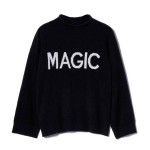
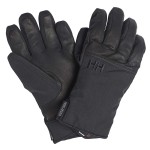







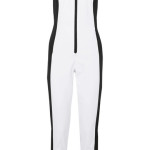







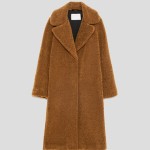
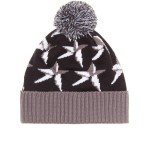








2 comments
Carolina Segurado Fernandes
Even if there’s not a sky trip in site, your shopping list and inspiration is impossible to resist! Inlove with the magic sweater!
Keep the inspiration going!
XOXO
Carolina
Chic Every Week
Hi Carolina! Thanks for stopping by. The “Magic” sweater it´s also one of my favorites. Have a nice day! xoxo Joana